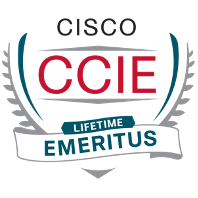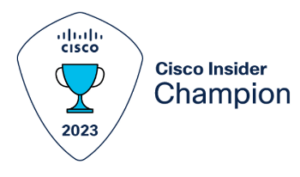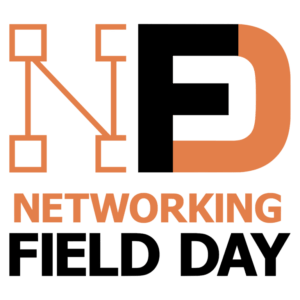This continues some of the thoughts around NAAS, shifting focus away from what types of things the vendors do and what the future might bring, to how we consume such services.
Some work I’ve been doing recently got me thinking about this. Basic questions:
- How do people become aware of what new capabilities various NAAS, Cloud, etc. vendors are selling? Keeping up with all the incremental feature additions is time-consuming, even with just one vendor (especially Cisco)!
- And how do (or should) such vendors get those capabilities in front of potential customers? Presentations of micro-innovations (small new features) get rather boring and may not be a good use of time!
Inevitably, I end up generalizing to networking learning in general.
Background
So, we’ve got a bunch of smart people working for Cloud (CSP), CDN, CoLo, and other vendors selling NAAS and other networking (and server, application, storage) services. They added some cool new services. Maybe even make their offering easier to use! How would I learn about that?
The answer I keep coming up with is: it’s on me to check out what they can do for me. Advertising and marketing in the NAAS space: pretty much “crickets” (silence)? Or am I missing something?
Mechanisms
One answer is trade shows and trade show booths. That is, for the really big vendors, their dedicated trade show is massive coverage for those who can attend. And if presentations are posted, they can be useful.
CiscoLive has always been very useful in that regard.
In the VMware events I’ve attended or looked at slides from, the slides seemed to always be a bit more marketing and light on technical. The recent COVID CiscoLive events with shorter sessions were the same way. Apologies, but I want more details and a bit more depth! (But not the fine details that belong in the now frequently absent/delayed documentation.)
For other products, one would have to be at the right trade show. My guess is most networking people get to attend 0 to 1 trade shows per year, as that time does not produce income for their employer. Choose wisely!
If you do get to go to a trade show, you have to make time and make an effort to get out and talk to the booth staff, “What can you do for me/my projects?” I’ll note that trade show attendees seem to be becoming more virtual, due to costs and other factors. (Written as COVID may be surging yet again.)
Trade show booths are not as effective with a virtual audience. Should they be? Virtual trade shows? Virtual booths (e.g. a hours- or day-long open webex/teams meeting with an expert)?
Another venue is TechFieldDay and similar events. Sort of a virtual trade show. Marketing (and light training) by presentation and recorded videos. Those have been a bit thin lately. I suspect slashed vendor marketing budgets.
Webinars and demos are another form of this.
What’s useful falls into two categories: one is shallow but broad coverage of capabilities, and the other is a deeper dive into one offering or one part of one offering.
I’ll note that Kentik has been doing a lot of this, focusing on demos covering use cases. Ok, they’re a rapidly growing network reporting services vendor, which is a slightly different focus, but still relevant.
Key takeaway: Use cases are a great sweet spot to hit because ultimately that’s what a potential customer needs to understand: how they might use your product to solve their problem!
And I somewhat wish vendors would put more use cases into their marketing. That is, provide a bit more detail than one diagram and a short story and enthusiastic bullet points with many superlatives. I don’t need all the details by any means, but I’d like to know the devices and technology pieces involved and how they get stitched together into the solution, and how they operate in a customer environment. Also, limitations, as well as scaling and performance considerations.
“Training” and “certification” can effectively get the word out. They lay out an organized way for a potential consumer of services to explore the offerings, and also build skills in using those services. Cynical thought: saving the provider support money – but thinking more positively, everyone wins when you build skills. I’m a big fan of online and virtual training, especially virtual remote hands-on labs. Vendors need to step up and provide some free training, perhaps out of the marketing budget.
My impression is Amazon is effectively using training this way, and Azure as well. Google a late starter, but now also doing it? CDNs and CoLo vendors?
One would expect good old print/web/other advertising to be a primary means. But where can tech companies really advertise? There’s no real common print or electronic “meeting place.” Yeah, Network World articles.
That being said, I’d say I mostly find out about companies and products via their emails and/or LinkedIn or other online links. And blogs.
Speaking of blogs: I clearly like authoring blogs. And that’s another venue: self-published blog or vlog articles. Many that I’ve seen are pretty narrowly how-to implement some feature focused, rather than a coherent overview of company capabilities (or some portion of them).
There’s also one commonly missed opportunity. I’m seeing more and more websites where I can’t get to documentation and tech blogs etc. without signing up and being admitted by some gatekeeper. My guess is this is either to limit what competition can readily see, and/or to force the generation contact info for sales people, email marketing campaigns, etc.
The problem I have with this is I want information NOW, not a day or two later. NOW is when I may have some time (and the interest) to try to wrap my brain around a product. Busy networking people are juggling many things, and returning to check out a vendor in more detail is probably rather far down the priority list, might even just get forgotten. In my case, if I can’t get my questions answered while drafting a blog, I move on to the next topic(s).
The other half of this problem is that many tech corporate websites seem to be slick glossy sales on the freely accessible pages. Perhaps targeted at the C-level execs. The problem I have with that is that I think buying recommendations come from senior techies, and as one of them, I am NOT going to recommend a company based on some glossy 1-3 page documents that say “we’re wonderful at doing XYZ,” I need more detail, and I don’t really want that filtered through a salesperson. Maybe that’s just me.
Customer View of This
Where I’m going with this, to some extent, is that right now the burden of staying current lies heavily on us as customers of vendors and services. We have to make a point of staying current on present or likely vendors, e.g. Cisco, AWS, Azure, <security vendor>, etc. There’s only so much time in a workday, but it’s on us to stay current.
Brain Exclusion or Capture
Quite a while ago I did some coding. What I found at that time was that I only had time to try to keep up with Microsoft’s code libraries or Apple’s, especially around new functionality and bug fixes. And that dealt with a fairly narrow set of things my code needed to do, like video graphics and mouse interaction.
This applies in a major way to networking. Networking + Security + Cloud + Automation is a huge set of technology to cover, even in a shallow way!
I’ll change the subject now to leave more discussion of “brain capture” for a blog dedicated to it.
Outlining
One thing that might be effective here is to put some structure on your “knowledge acquisition.” Explicitly or implicitly.
After many years of writing blogs, documentation, etc. I’ve learned something my high school English teachers probably tried to get across: outlining is your friend!
When writing, I now bang out 3, 5, 7 top level headings (in MS Word). They may not be completely right, but they’re a good starting point for what I think the blog or whatever is to be about. I then do subheadings when a top-level heading has some complexity to it. Etc.
The relevance here is that if you consider that knowledge might be organized in outline form, there are top-level outline headings: Networking, Security, Cloud, Automation, etc. Ok, some things cross boundaries, but assign them to a category.
Within those, you have areas: Routing, Switching, maybe Campus versus Data Center, etc. Level two headings. (Does that mean I’ve spent too much time in MS Word?)
And within those, there are sub-sub-headings.
Cutting to the chase: deciding which of those levels of headings get how much of your attention can help. So overall, what is/are your main interest(s)? And within those, what are your priorities?
Cisco certifications may fit nicely into that, as long as your intent is focus, not breadth.
Hope this helps.
Conclusions
Marketing / advertising by tech companies seems to be kind of weird, rather different than other types of products. It focuses on overall company images, but less on specific products? In particular, awareness of products seems much more driven by customer research, pull rather than push?
I’d find it useful for vendors to provide a good summary of their capabilities at a bit more detailed level than most websites and sales slick documents current provide. And maybe that’s just me. Or maybe I’m correctly writing a shared sentiment with other tech folks?
Links
Prior NaaS blogs:
- https://netcraftsmen.com/the-future-of-naas-networking-as-a-service/
- https://netcraftsmen.com/naas-network-as-a-service-taxonomy/
Let’s start a conversation! Contact us to see how NetCraftsmen experts can help with your complex challenges.



